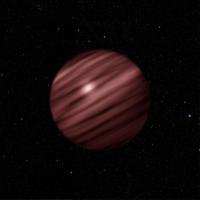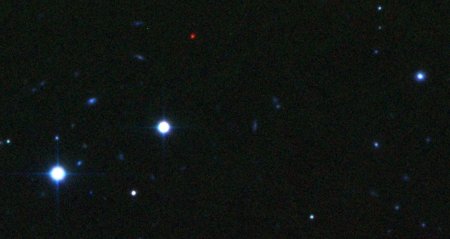Brown Dwarf
By: Yuen Tai Chan

What are brown dwarfs?
Brown dwarfs are sub-stellar objects that contain 75 to 80 times the mass of the planet Jupiter but do not have enough mass to initiate a hydrogen fusion in their core. For that reason, brown dwarfs are often known as “failed stars”. Due to the fact that the brown dwarfs are unable to initiate hydrogen fusion in their core, they are very cool in temperature and do not give off light.
How are objects labeled as brown dwarfs?
The objects in space are labeled as brown dwarfs if they fit the criteria of having more mass than 13 times that of Jupiter’s or less than 80 times the mass of Jupiter.
Often times, low-mass brown dwarfs are mistaken for gas planets. In order to distinguish low-mass brown dwarfs from gas planets one would need to take a look at the densities of the two objects. The density of brown dwarfs is always higher than a gas planet’s density.
There are also times when high mass brown dwarfs are mistaken for low-mass stars. To distinguish high mass brown dwarfs from low-mass stars one would need to determine if lithium is present in the objects. Generally lithium is present in brown dwarfs and not low-mass stars because low-mass stars deplete their supply of lithium rapidly.
Temperatures of brown dwarfs
The temperature of brown dwarfs ranges from 2200K to less than 700K
How are brown dwarfs discovered?
Since brown dwarfs emit almost no light, it is difficult for regular telescope to spot. However, brown dwarfs emit huge amount of infrared radiation, so in order to find new brown dwarfs in the universe, using an infrared telescope would be necessary. Another way of discovering new brown dwarfs is by using the radial velocity method.
Types of brown dwarfs

M dwarfs:
This type of brown dwarfs temperatures as low as 2,200K, have water and strong oxide features in their spectra and may be red dwarfs or brown dwarfs, depending on their mass.
L dwarfs:
This type of brown dwarf has temperatures of about 1,500°K to 2.200°K. L dwarfs have spectra characterized by strong metal hydride bands and even prominent water bands. The first prototype of this type of brown dwarf is a brown dwarf named GD 165B.
T dwarfs:

This type of brown dwarf has temperature ranging from 1,500°K to 800°K and spectra that show strong absorption by methane and water. The first prototype of this type of brown dwarf is a brown dwarf named Gliese 229B.
Y dwarfs:

The Y dwarf named CFBDS J005910.90-011401.3 is represented by that red dot at the top of the image
This type of brown dwarf is expected to be much cooler than T dwarf. This class of brown dwarf was only theoretical until recently in March of 2008, a 620°K brown dwarf was discovered. This brown dwarf named CFBDS J005910.90-011401.3 is the first prototype of the Y dwarfs and it displays wide ammonia absorption in the near-infrared.

This video explains how brown dwarfs are formed and what they are.
-------------------------------------------------------------------------------------------------------------------------------------------------------------------------
Sources:
http://en.wikipedia.org/wiki/Brown_dwarf
http://coolcosmos.ipac.caltech.edu/cosmic_classroom/cosmic_reference/brown_dwarfs.html
http://blogs.discovery.com/cosmic_ray/2009/01/how-now-brown-d.html
http://www.daviddarling.info/encyclopedia/B/browndwarf.html
Images sources:
http://www.centauri-dreams.org/wp-content/images/thumb-brown_dwarf.jpg
http://grad.physics.sunysb.edu/~jfaherty/BDKP.png
http://www.centauri-dreams.org/wp-content/uploads/2008/04/cfbds0059izj_bis.jpg
http://www.astro.virginia.edu/~cp4v/Class/Images/gliese229.gif
Video Source:
http://www.youtube.com/watch?v=1nWlt-Wupes
Comments (0)
You don't have permission to comment on this page.